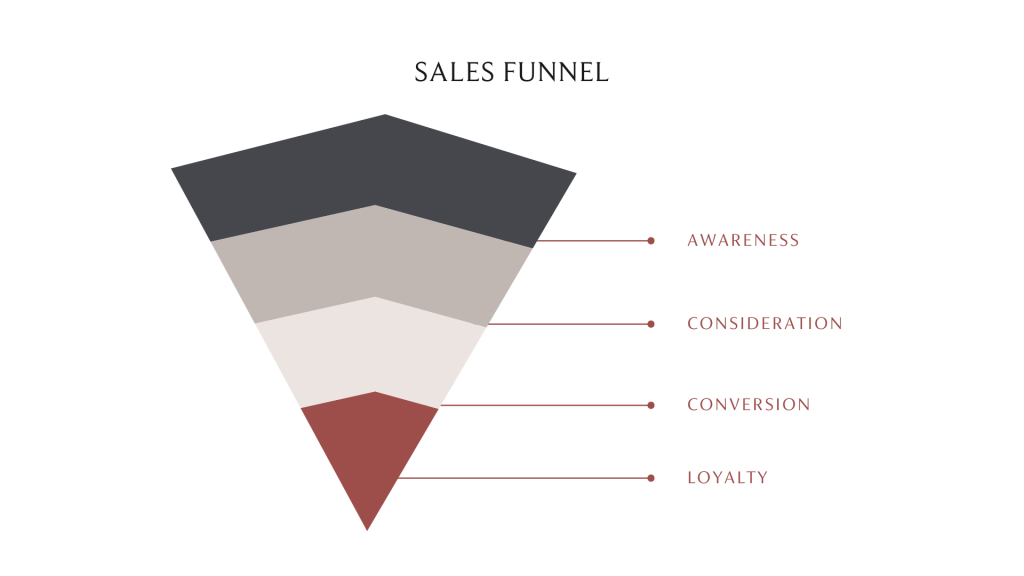Selling is a bit like dating. Two parties are looking for the right match but from different perspectives. If those perspectives more or less align and the chemistry is right, they’ll click. But selling is also like dating in that a career-focused professional may be more interested in their career than finding a partner. If you’re an interior designer, you may have a similar relationship with sales in your business. So if you’re timid about sales, get familiar with the sales basics for interior designers.
You and your prospects
As the seller, your goal is to find and engage your ideal client. If you’re not sure who your ideal client is, then spend some time thinking about and researching who they are and where you can find them. We recommend starting by completing our Interior Design Client Questionnaire.
As the buyer, the prospective client is looking for a qualified, reliable expert whom they feel comfortable working with and who will deliver the result they are looking for. You need to show and convince the prospect that you are the best match for them and their project.
Moving through the sales funnel
Marketers and sales experts often refer to the process by which a transaction is completed as the sales funnel. It consists of several steps. Some models use three steps, some four, some five. The process, however, is the same.
- The prospect’s journey begins with a problem, need or desire they want help with. At the top of the funnel—the widest part—they are seeking information. This is called the AWARENESS stage. They are casting a wide net. They want to see who might best be able to help them. At this stage they are scanning websites and social media, checking out their options and others’ recommendations. Your marketing efforts can help them to find you, if you’ve done your homework.
- Moving down the funnel, the prospect begins to narrow their search. This is sometimes referred to as the INTEREST or CONSIDERATION stage. They may contact several possible providers, follow their blog, review their portfolio, or subscribe to their newsletter. This is where you may have your first opportunity to engage with the prospect. At this point, you’re not trying to sell to them, just invite them to learn more about you and your services. Focus on educating and providing value, not making the sale.
- Eventually, the prospect will choose one or two providers of interest. Some models refer to this as the CONVERSION or DECISION stage. It’s when the prospect goes from window shopping to entering the store. Other models break this stage into two phases, DESIRE and ACTION. During this stage, you will have an opportunity to talk and/or meet with the prospect. If that goes well, you will be asked to submit a proposal and possibly a plan. Should everything click, you’ll be able to close the deal.
- Finally, some models include another stage, LOYALTY. This has to do with retaining the prospect as an ongoing client for repeat business and future referrals. Maintain contact with the client. Send them a card or note or gift on important holidays and anniversaries. Follow up periodically to see if their needs or wants have changed. In short: stay top-of-mind.

Priming the pipeline
You don’t want to wait until prospects find you. You should always be proactively looking for opportunities to generate leads. Marketing, networking, engaging on social media, and being active in your community can raise prospects’ awareness. Another source of leads is your current and former clients who may be willing to provide referrals or connect you with their networks.
When you do engage with prospects at the discovery stage, let them know that you understand and identify with their problem. Show them how you have helped other clients with similar problems. Move them from the discovery stage to the proposal and decision stage by convincing them that you are the knowledgeable, capable, reliable, and empathetic expert they are seeking.
Qualifying and aligning
Selling, like dating, is founded on mutual consent. The prospect wants to be sure you’re the one they’re looking for. You want to be sure that the client is the right fit for you, as well. Among the things you want to consider when deciding whether to work with a prospect are:
- Need — Does the prospect’s need align with your services, approach, business goals, and culture? Do they fit the definition of your ideal client?
- Budget — Is the budget they are proposing sufficient for the size of the project? Does it meet your minimum requirements? Is the client open to increasing the budget? Are they willing to accept changes later on if something unexpected occurs or they change their mind?
- Authority — Does the prospect have the authority to engage you to do the project, to sign a contract, and to make the necessary payments?
- Timeline — Is the prospect’s timeline realistic? Does it align with other projects or obligations you have?
If the answers to all of the above are yes, you are ready to move the prospect to the action stage. This is where you provide them with a detailed proposal, project plan and budget.
Negotiating and earning trust
Chances are the prospect will have some questions about the initial proposal and budget. Keep in mind that mentally they are moving from their idea of what will solve their problem to accepting your expert solution. Here again, empathy is critical. Let them know you understand why they may have some reservations or other ideas in mind. Educate them as to why you believe your solution is best.
If approached in the right spirit, being willing to negotiate with the client can be another way to reassure them that your role is to serve them and to deliver the result they expect. Negotiating can get tricky with some clients. Check out our article on negotiation techniques for interior designers if you need some pointers or a refresher. A successful negotiation is a powerful way to build trust with the client. It also helps to set a positive tone for the entire project.
Closing
Once you and the prospect have come to an agreement on the scope and cost of the project, it’s time to bring the sales process to a close. How you go about doing that likely will depend on your own personality and style of doing business, the personality of the prospect, and the degree to which you are certain the prospect is ready to move forward. One source lists 17 different techniques to choose from. This is the step at which you get the client to sign on the dotted line and give you a retainer.
Many designers don’t like the idea of selling their talent and services, as though they were no different from widgets. Instead, recognize that what you are offering a prospect is your expertise and experience to solve their problem. You are not trying to coerce them into paying for something they don’t want. Rather, you will exceed their expectations. To borrow from Apple co-founder Steve Jobs, you have the ability to give them what they want even though they don’t know they want it. And they will be astonished and grateful when you do. That’s not a sham. That’s a gift.
